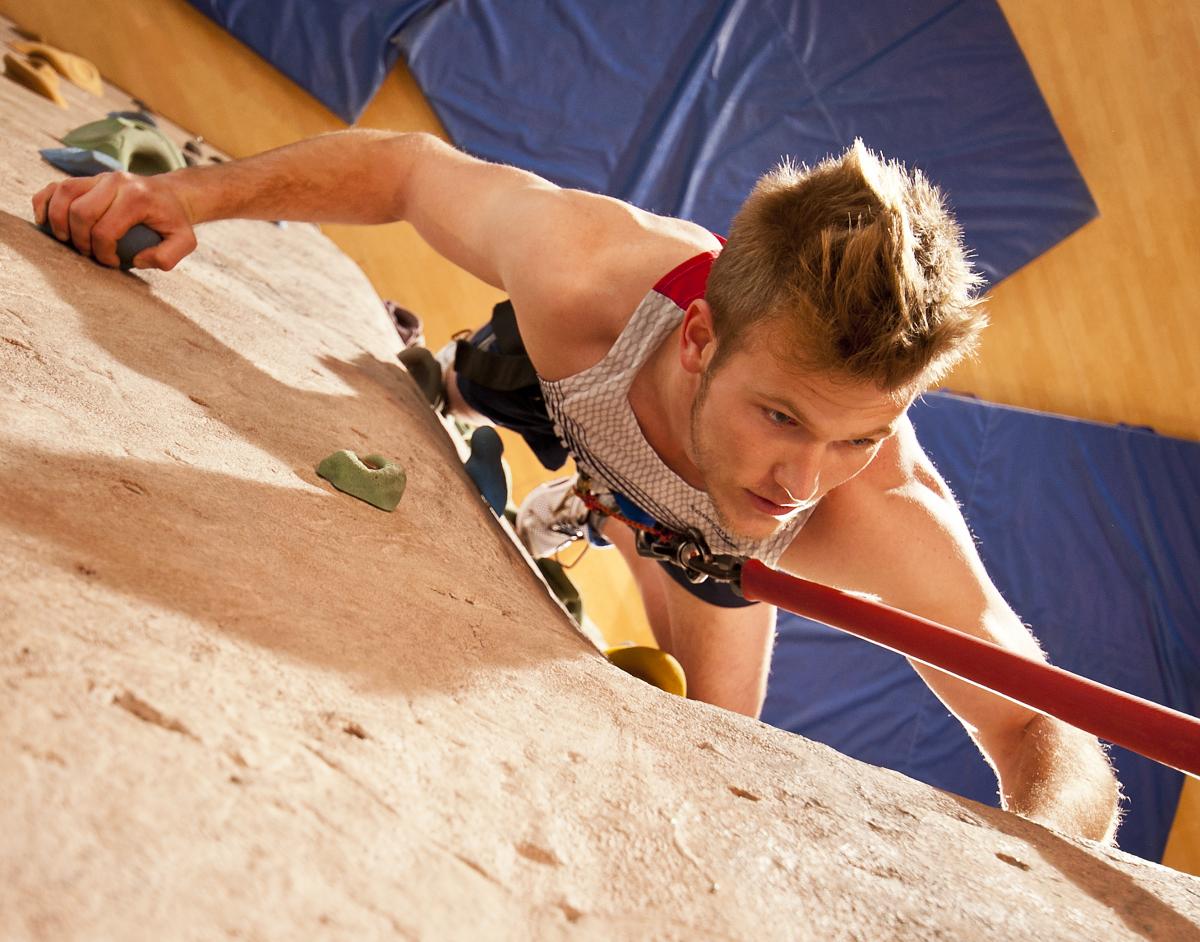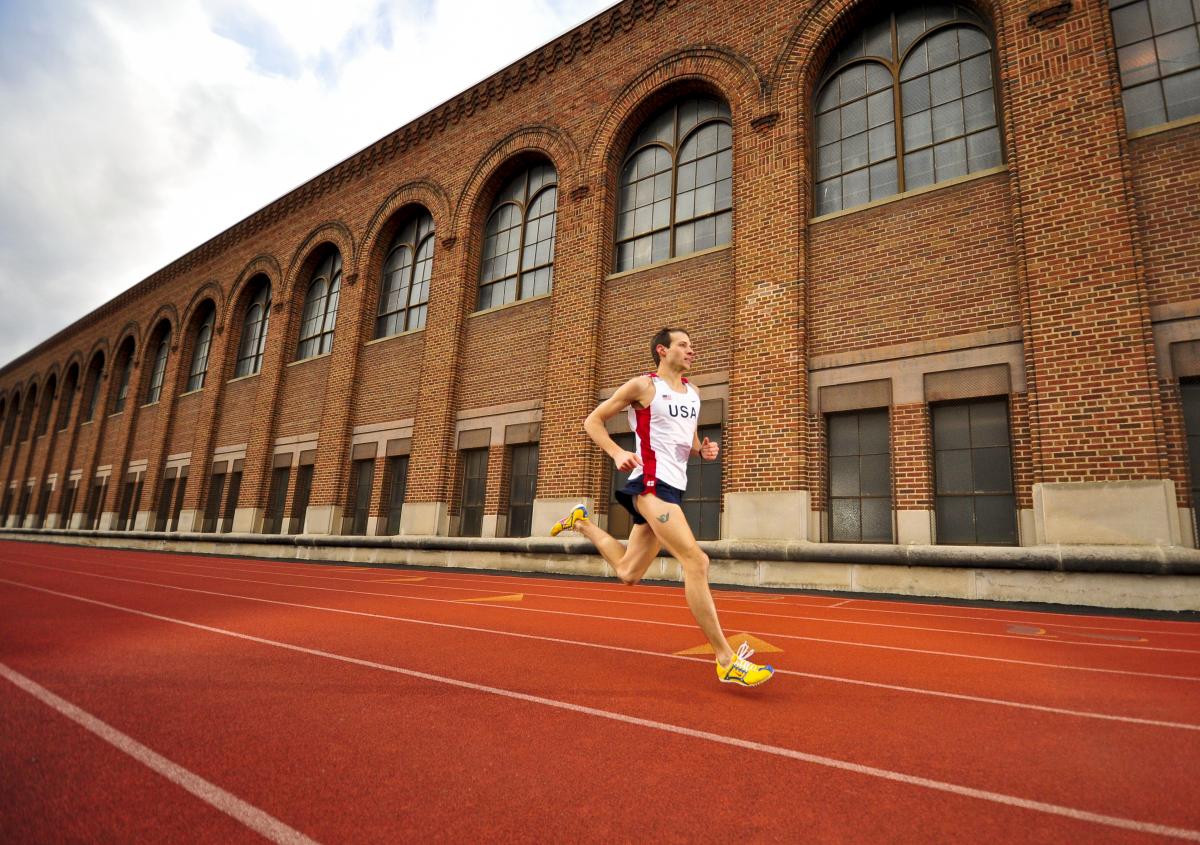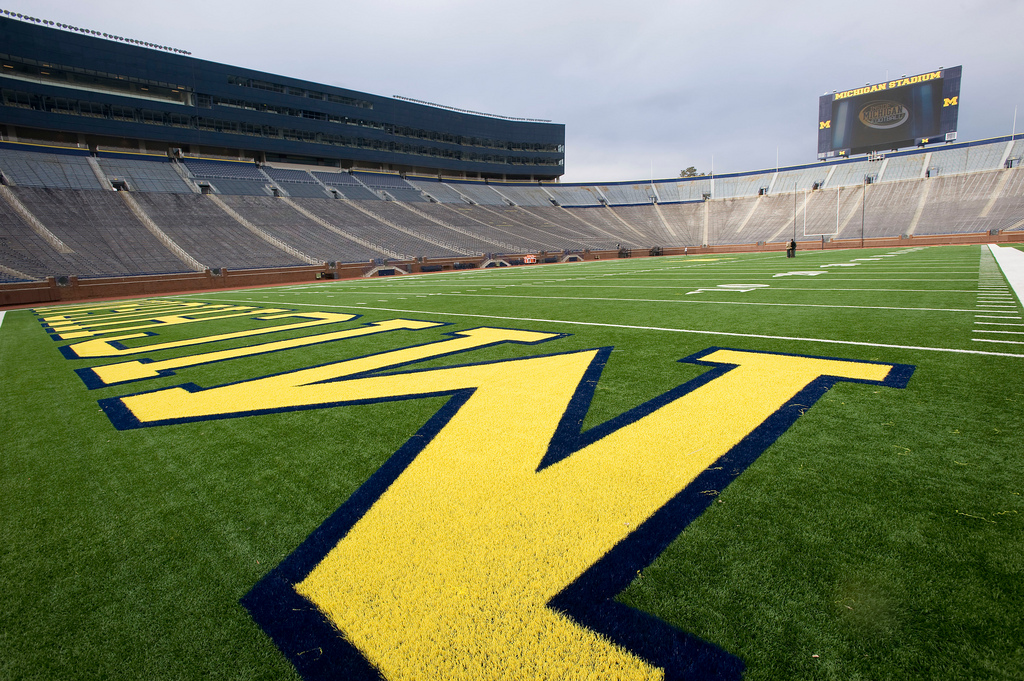 When people think of Ann Arbor, Michigan, the first thing that probably comes to mind is Michigan Stadium — “The Big House” on the University of Michigan campus. The 107,601-seat stadium, the largest in the United States and second-largest in the world, is home to the Wolverines football team and also has hosted such marquee events as the 2014 NHL Winter Classic and International Champions Cup soccer games in 2014 and 2016.
When people think of Ann Arbor, Michigan, the first thing that probably comes to mind is Michigan Stadium — “The Big House” on the University of Michigan campus. The 107,601-seat stadium, the largest in the United States and second-largest in the world, is home to the Wolverines football team and also has hosted such marquee events as the 2014 NHL Winter Classic and International Champions Cup soccer games in 2014 and 2016.
But Michigan Stadium is only one of several world-class sports venues in this thriving Big Ten city with a small-town feel. Located about 25 minutes west of Detroit and an hour south of Lansing, the greater Ann Arbor area is home to two other college campuses, both with state-of-the-art athletic facilities — Eastern Michigan University in Ypsilanti and Concordia University in Ann Arbor — as well as high-profile ice rinks, golf courses, aquatic centers, recreation trails and even bowling alleys.
Plus, Ann Arbor was named one of the safest cities in the United States last year by Niche, a company that researches and compiles data about cities.
“Whatever their feelings about the University of Michigan football team, people want to come to Ann Arbor,” laughs Meaghan Hughes, sales and event manager for the Ann Arbor Sports Commission. “It’s a vibrant city, and there’s always something happening.”
‘Athletics Are Celebrated’
Even though the city has been servicing the sports market for years through the Ann Arbor Area Convention and Visitors Bureau, the Ann Arbor Sports Commission has been in operation for about 12 months. In addition to an emphasis on bringing sporting events to the area, the commission also focuses on attracting off-season meetings held by national governing bodies and other organizations.
“We are a four-seasons destination,” says Laura Berarducci, director of marketing for the Ann Arbor Convention and Visitors Bureau. “There may be snow on the ground, but the city isn’t hibernating.”
“In order to go further in this market, we needed to separate sports and everything else,” Hughes adds. “We are the next generation of sports marketing in this city, and we are committed to bringing more athletic events to the area. We also rely heavily on working with local clubs and teams.”
Ann Arbor already boasts an impressive resume:
-
Last summer, the city hosted the inaugural LPGA Volvik Championship at Travis Pointe Country Club. The professional 72-hole golf tournament raised money for the National Network of Depression Centers and Military Support Programs and Networks, and will be held again this year from May 22-28. More than 30,000 spectators are expected, and the economic impact for southeast Michigan is estimated at $20 million. Hughes says the event is likely to return in 2018, too.
-
The spacious Ann Arbor Ice Club, home of the Ann Arbor Figure Skating Club, hosts two annual skating competitions, including the Dr. Richard Porter Synchronized Classic — which welcomes 2,500 youth and adult skaters from all over the world. Held every December, the weekend competition is one of the city’s most important events and will celebrate 22 years in 2017. Additionally, the Springtime Invitational is a solo ice-dancing competition that will be held May 18-21 this year.
-
The eight-lane, 50-meter pool at the University of Michigan Canham Natatorium has hosted the NCAA Women’s Water Polo Championship, NCAA Women’s Swimming and Diving Championships, Big Ten Conference Championships, the U.S. Speedo Junior National Championship, the Phillips 66 National Diving Championship and various USA Water Polo championships. The 1,200-seat facility also offers a diving well with one- and three-meter springboards and a 10-meter platform.
-
In 2014, the National Bowling Association hosted its annual convention in Ann Arbor and held a tournament at several bowling centers in the area.
-
Special Olympics of Michigan hosts its State Fall Games in the Ann Arbor area, with such events as cycling, flag football, golf, kayaking, soccer and softball taking place in neighboring cities Canton, Chelsea and Ypsilanti.
-
EMU’s facilities, including the Convocation Center, Rynearson Stadium and Bowen Field House, also welcome major events.
 “We have a great volunteer base,” Hughes says, citing officials from local universities and clubs, as well as locals who are passionate about sports and recreation. “Athletics are celebrated throughout the entire Ann Arbor area, and residents embrace the role of both participant and spectator.”
“We have a great volunteer base,” Hughes says, citing officials from local universities and clubs, as well as locals who are passionate about sports and recreation. “Athletics are celebrated throughout the entire Ann Arbor area, and residents embrace the role of both participant and spectator.”
Still Under Expansion
This year likely will be a banner year for Ann Arbor. In addition to the returning events mentioned above, U.S. Figure Skating will bring the 2017 Nations’ Cup Interclub Theatre on Ice to the University of Michigan’s Yost Ice Arena on April 20-23, and the 2017 Big Ten Softball Tournament will be held at U-M’s Alumni Field on May 12-14.
“The University of Michigan is very important to us, and there are always opportunities to dig deeper and build stronger relationships,” Hughes says, adding that the commission assists with the university’s needs when it hosts swimming and field hockey events for the Amateur Athletic Union Junior Olympic Games, as well as a variety of NCAA tournaments and regional and national championships.
A new 280,000-square-foot sports center is under construction at U-M that will house the men’s and women’s track and field, cross country, lacrosse and soccer teams, as well as women’s rowing. Plans call for an indoor track facility to seat 2,000 spectators and an outdoor facility for 500 spectators. An outdoor stadium also is expected to hold 2,000 fans. Events will be scheduled beginning in 2018.
Another local project involves the DTE Energy Foundation Trail, which the Michigan Department of Natural Resources is in the process of expanding into a system for recreational and competitive mountain biking in Chelsea’s Waterloo Recreation Area. The first 5.2-mile loop was completed in June 2016, with the second loop expected to be ready for riders this spring. One additional loop will open every year through 2020, resulting in a total trail mileage of approximately 20 miles.
Meanwhile, the Iron Belle Trail is the longest designated state trail in the country, with more than 2,000 miles dedicated to hiking and bicycling. Incorporating forests, rivers and towns, the trail proves why Michigan is often referred to as “The Trails State.”
Similarly, Ann Arbor has been certified as a “Tree City USA” by the Arbor Day Foundation for the past 35 years, thanks to more than 150 parks and dense woodland areas. 
The city also is home to a pair of up-and-coming professional leagues. AFC Ann Arbor will kick off its second season in the National Premier Soccer League in May, and the Derby Dimes is the city’s entry in a burgeoning women’s roller derby culture.
“We’ll see if those teams help contribute to bringing additional events to Ann Arbor and elevating the city’s profile,” Hughes says.
An ‘Infectious’ City
Visitors often are surprised to discover that Ann Arbor is more than a typical college town, Berarducci says. A thriving and engaging downtown boasts some of the best dining experiences in the Midwest — many at independently owned restaurants — as well as theatrical performances, outdoor markets, expansive parks, a variety of live music and night life, and extensive boutique shopping.
The city also offers several museums that are a big hit with families visiting Ann Arbor for youth sports competitions. They include the Ann Arbor Hands-On Museum, the University of Michigan Museum of Natural History and the Michigan Firehouse Museum.
And, of course, “The Big House” provides guided tours (for a fee) on weekdays to youth sports teams and other groups visiting the city. “Whether you’re a Michigan fan or not, seeing that place is a real experience,” Hughes says.
“It’s almost impossible not to come to Ann Arbor and take a little piece of it with you when you leave,” Berarducci adds. “It’s infectious.”

There are no comments
Please login to post comments